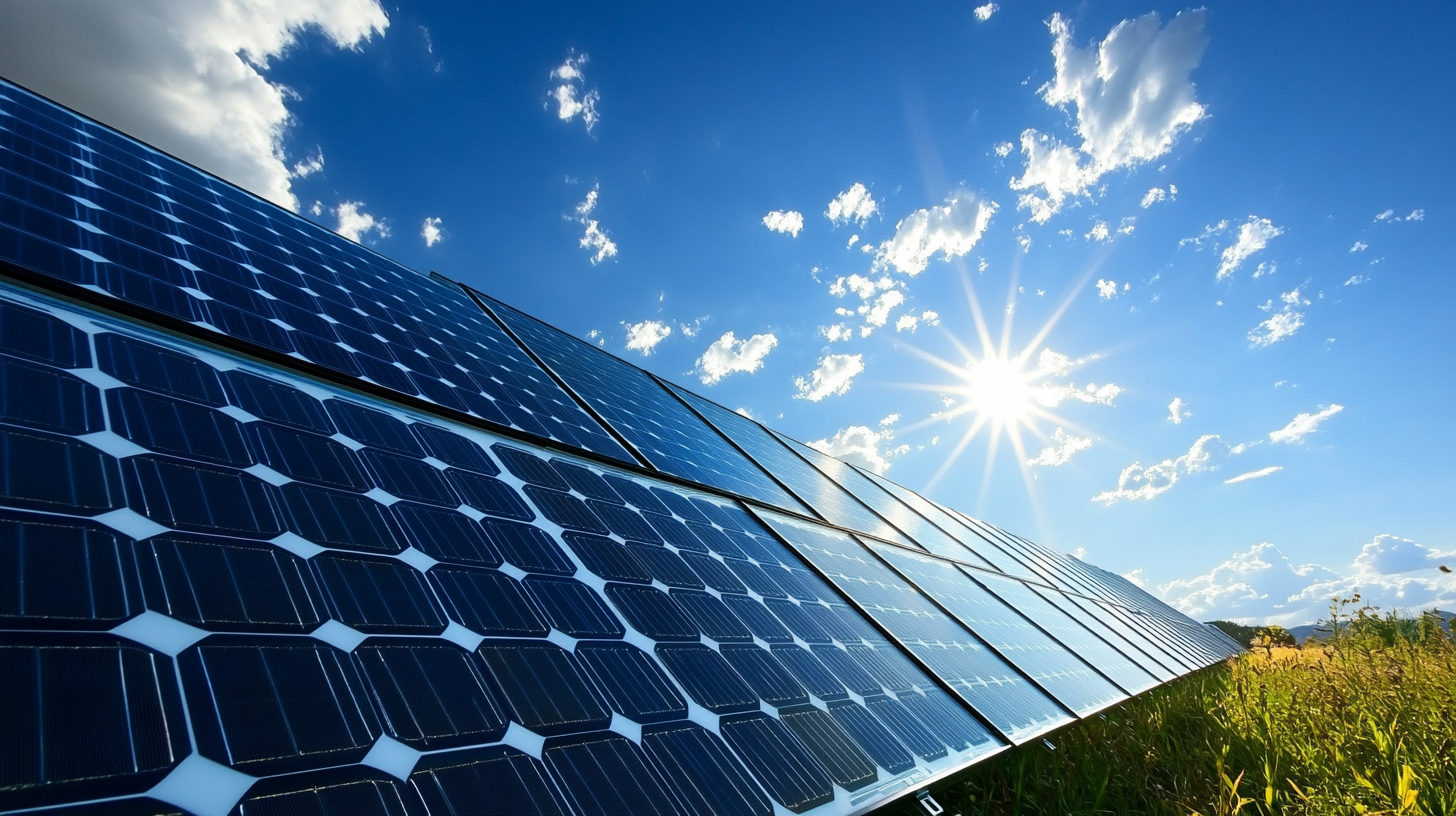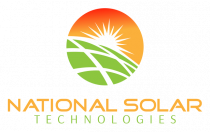Top Strategies for Maximizing Efficiency in Best Solar Systems
 In today's rapidly evolving energy landscape, maximizing efficiency in solar systems is not just a trend but a necessity. According to a report by the International Renewable Energy Agency (IRENA), solar energy could account for up to 30% of the world's energy supply by 2030, underscoring the importance of optimizing these systems for enhanced performance. As technology advances, solar panels have become increasingly efficient, with some models achieving efficiencies exceeding 22%. However, many installations underperform due to improper design, inadequate maintenance, or suboptimal orientation.
In today's rapidly evolving energy landscape, maximizing efficiency in solar systems is not just a trend but a necessity. According to a report by the International Renewable Energy Agency (IRENA), solar energy could account for up to 30% of the world's energy supply by 2030, underscoring the importance of optimizing these systems for enhanced performance. As technology advances, solar panels have become increasingly efficient, with some models achieving efficiencies exceeding 22%. However, many installations underperform due to improper design, inadequate maintenance, or suboptimal orientation.
By implementing top strategies for maximizing efficiency, such as utilizing advanced monitoring systems, optimizing tilt angles, and incorporating energy storage solutions, users can significantly boost the output and longevity of their solar systems. As the demand for sustainable energy solutions grows, these strategies will be pivotal in ensuring that solar technologies deliver their maximum potential, benefiting both users and the environment alike.
Key Factors to Consider When Comparing Solar Systems for Efficiency
When comparing solar systems for efficiency, several key factors can significantly influence your decision-making process. First and foremost, consider the type of solar panels being used. Monocrystalline panels are known for their higher efficiency rates, typically ranging between 15% to 22%, making them an excellent choice for homeowners with limited roof space. In contrast, polycrystalline panels, while more budget-friendly, may offer lower efficiency rates, necessitating more panels to achieve similar output. Understanding the differences in panel types is crucial for maximizing energy production.

Another important factor is the inverter quality. The inverter is responsible for converting the direct current (DC) generated by your solar panels into alternating current (AC) used in your home. A high-quality inverter can enhance the overall efficiency of the solar system. Look for inverters with good warranties and proven performance metrics, as these can significantly impact the longevity and reliability of your solar energy system. Additionally, consider installation aspects such as location and angle, as these can also affect how much sunlight your system can capture, ultimately influencing its overall efficiency.
Analyzing Performance Metrics: What to Look for in Solar System Comparisons
When comparing different solar systems, analyzing performance metrics is crucial to identify the most efficient options available. Key metrics include energy output, efficiency ratings, and degradation rates, each serving as a vital indicator of a solar system's performance over time. Energy output is typically measured in kilowatt-hours (kWh) and indicates how much electricity a solar system can generate under optimal conditions. Prospective buyers should look for systems that consistently produce high energy output, providing a better return on investment.
Efficiency ratings, expressed as a percentage, show how well solar panels convert sunlight into usable energy. Higher efficiency ratings mean more power generation in a smaller space, making them ideal for residential installations with limited roof space. Additionally, understanding the degradation rate of solar panels is essential, as it indicates how much their efficiency will decline over the years. Most high-quality panels have a low degradation rate, ensuring they maintain substantial energy production well beyond their warranty period.
By focusing on these performance metrics, consumers can make informed decisions that maximize the efficiency and longevity of their solar systems.
The Role of Solar Inverters in Maximizing System Efficiency
In the realm of solar energy, solar inverters play a pivotal role in maximizing the efficiency of solar systems. According to the International Energy Agency (IEA), optimized inverter performance can enhance energy output by up to 25%. This is particularly significant as solar panel technology continues to evolve, with new inverter models incorporating advanced features such as Maximum Power Point Tracking (MPPT), which adjusts the electrical load to ensure that the solar panels are producing at their peak performance.
Tips for improving inverter efficiency include regular maintenance and timely updates to firmware, as manufacturers often release enhancements that can boost performance significantly. Additionally, utilizing string inverters with enhanced monitoring capabilities allows for better oversight of each panel's performance, thereby identifying and addressing inefficiencies swiftly.
Furthermore, selecting the right inverter type is crucial. Central inverters, for larger installations, can be more efficient, but for residential systems, microinverters can provide increased performance by optimizing each panel independently. The Solar Energy Industries Association (SEIA) notes that choosing the right inverter can result in a 10-20% increase in overall system efficiency, making it an essential consideration for solar energy users aiming to maximize their investments.
Top Strategies for Maximizing Efficiency in Best Solar Systems - The Role of Solar Inverters in Maximizing System Efficiency
| Strategy | Description | Impact on Efficiency (%) | Recommended Solar Inverter Type |
|---|---|---|---|
| Regular Maintenance | Conduct regular inspections and cleaning of solar panels. | 5-10% | String Inverters |
| Optimized Tilt Angle | Install panels at the optimal angle based on geographic location. | 10-20% | Microinverters |
| Smart Monitoring | Implement monitoring systems to track performance in real-time. | 3-7% | Power Optimizers |
| Seasonal Adaptation | Adjust setup according to seasonal sunlight variations. | 7-12% | Hybrid Inverters |
| Correct Sizing | Ensure system size matches energy needs to avoid losses. | 15-25% | Central Inverters |
Cost-Benefit Analysis: Evaluating Return on Investment for Solar Systems
When considering the implementation of solar systems, a thorough cost-benefit analysis is essential to determine their true value. An effective evaluation involves calculating both the initial investment and the long-term savings associated with solar energy. The initial costs typically encompass the purchase and installation of solar panels, inverters, and batteries. However, potential savings on electricity bills and incentives such as tax credits and rebates can significantly offset these upfront expenses. By forecasting energy savings over time, homeowners and businesses can better understand the return on investment (ROI) for their solar systems.
Additionally, it's important to factor in the lifespan of solar technology and any maintenance costs that may arise. Most solar panels come with warranties that guarantee performance for 25 years or more, underscoring their durability and reliability. Analyzing local electricity rates and potential increases can further illustrate the economic advantages of going solar. Overall, conducting a detailed cost-benefit analysis not only clarifies the financial implications but also highlights the long-term sustainability and energy independence that solar systems can provide.
Cost-Benefit Analysis: Evaluating Return on Investment for Solar Systems
Real-World Case Studies: Successful Strategies for Solar Efficiency
In the quest for enhanced efficiency in solar systems, real-world case studies reveal compelling strategies that have proven effective. For instance, a study by the National Renewable Energy Laboratory (NREL) highlighted that optimizing the tilt angle of solar panels can boost energy output by up to 30%. This finding underscores the importance of site-specific adjustments. Companies like Sunrun have implemented these strategies by customizing installations according to regional weather patterns and solar paths, achieving remarkable performance gains.
**Tip:** Regular maintenance is vital. Cleaning solar panels can improve efficiency by up to 25% according to a report from the Solar Energy Industries Association (SEIA). Dust and debris accumulating on panels can significantly hinder their ability to absorb sunlight.
Another successful approach can be seen in the integration of smart technology. A case study involving Tesla's solar roofing demonstrated that utilizing advanced monitoring systems allowed homeowners to track energy production and consumption in real-time. This not only maximized system efficiency but also empowered users to make informed decisions about their energy usage.
**Tip:** Consider investing in energy storage solutions. According to a report by Wood Mackenzie, homes with solar energy systems coupled with battery storage can increase self-consumption by up to 60%, effectively reducing reliance on grid electricity.


